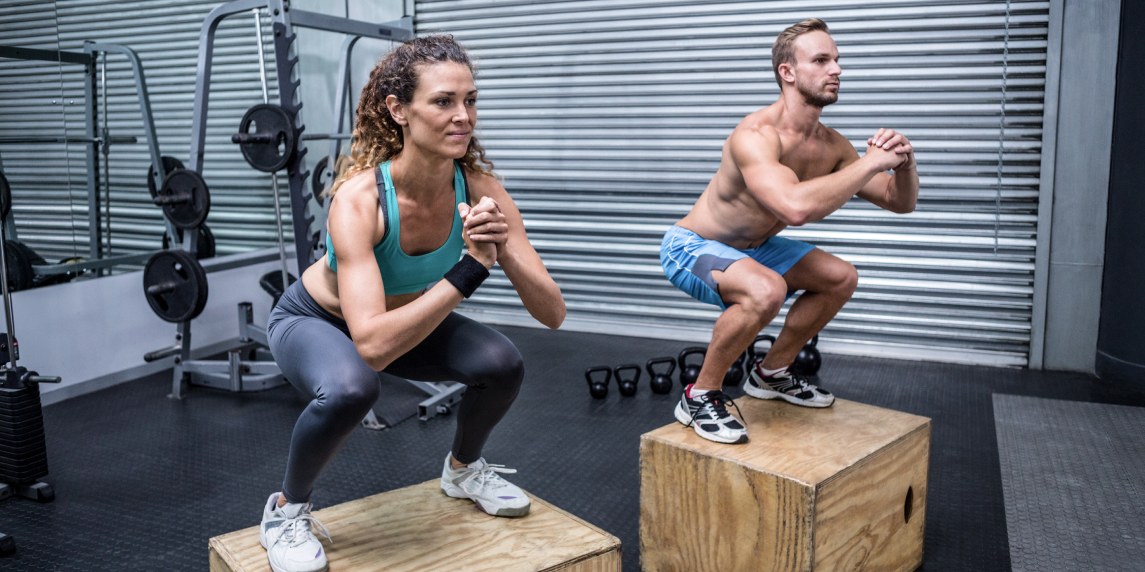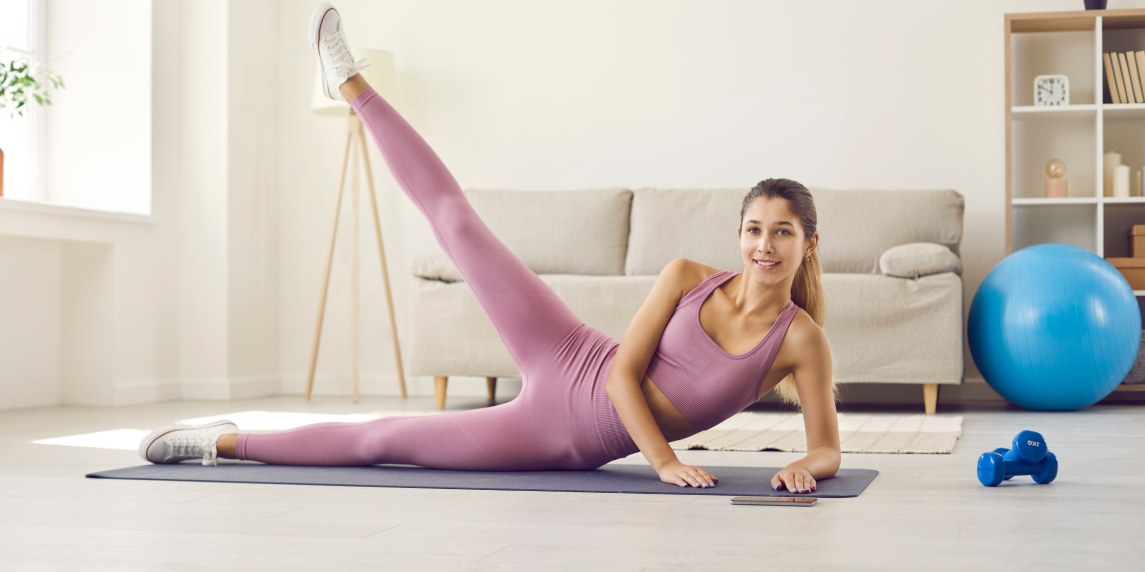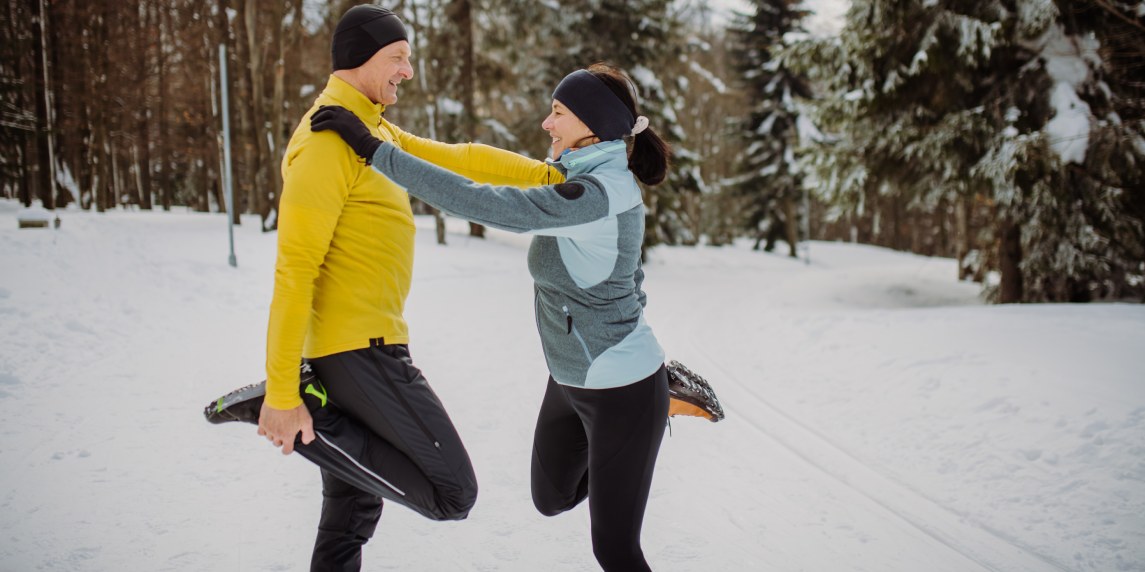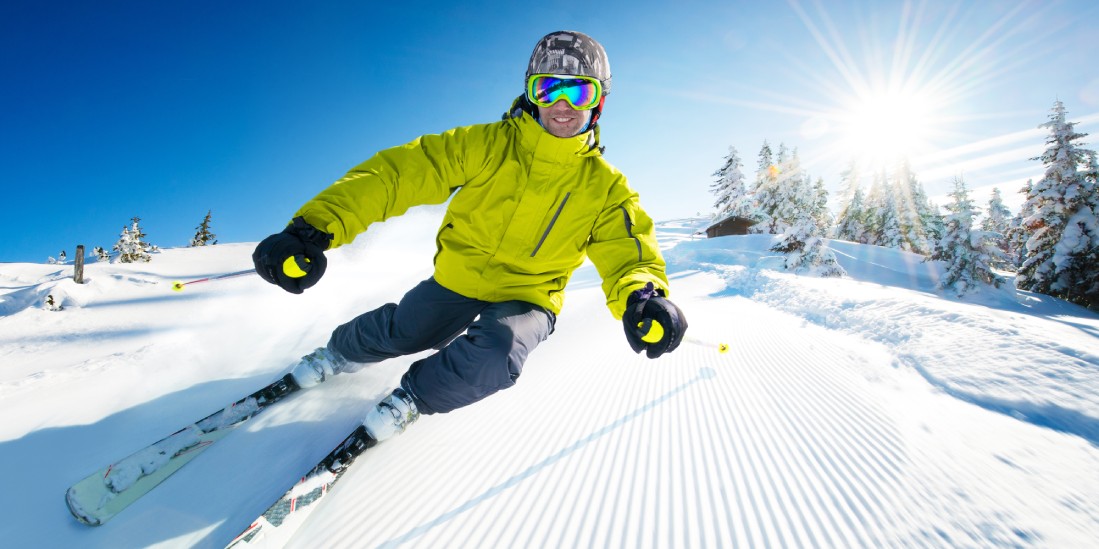Skiing is a sport that, for most people, goes beyond the thrill of the chase. The allure of fresh snow, crisp mountain air, and the exhilarating rush of carving down a pristine slope makes many skiing enthusiasts eagerly anticipate an adrenaline-pumping adventure every winter.
However, while the thrill of carving through the snow is unmatched, it’s essential to acknowledge the potential risks associated with skiing, particularly the prevalent occurrence of knee injuries. The knee, being a vulnerable joint during skiing, often bears the brunt of the sport’s dynamic movements.
However, there is an easy solution! The best way to avoid a painful skiing experience is to incorporate some essential exercises into your everyday routine before hitting the slopes. But before we discover the ski knee injury prevention exercises, let’s see why you need exercises at all.
What is the Importance of Strengthening Your Knees?
Strengthening your knees before heading to the slopes is a crucial step for various reasons. Skiing places significant stress on the knee joints, making them vulnerable to injuries such as ACL (Anterior Cruciate Ligament) tears and meniscus issues. Perhaps this is the reason why the knee is the most frequently injured area in people dealing with skiing injuries.
- By strengthening the muscles surrounding the knees, including the quadriceps, hamstrings, and calf muscles, you enhance joint stability and reduce the risk of injuries resulting from sudden movements.
- Stronger knees also provide better control, as revealed by sports medicine, allowing you to navigate slopes with improved balance and agility, ultimately enhancing your overall skiing performance.
- More than just preventing injuries, knee strength contributes to better endurance, ensuring you improve your skiing time for longer periods without succumbing to fatigue.
- A well-prepared knee structure instills confidence on the slopes, enabling you to tackle varied terrains and challenging runs without the fear of potential knee issues. This also enhances your skiing experience and adventures.
- Improved knee strength also acts as an effective proactive injury prevention, promoting long-term joint health and ensuring a more enjoyable and sustainable skiing experience.
However, alongside these exercises, chiropractic care plays a vital role in ensuring a comprehensive approach to injury prevention and enhancing your skiing experience.
5 Must-Perform Exercises for Ski Knee Injury Prevention
To ensure your dream skiing trip does not turn into a recovery nightmare, here are 5 essential ski knee injury prevention exercises to prepare you for the slopes.

1. Squats: The Backbone of Knee Stability
Squats are the most foundational exercise recommended by functional movement therapists to establish robust knee stability. The exercise targets the quadriceps, hamstrings, and glutes, thus helping you build strength in the muscles surrounding the knee joint. This greatly reduces the vulnerability of your knees during those thrilling downhill descents.
Here is how to perform squats:
- Position your feet shoulder-width apart.
- Ensure you maintain a straight back and lifted chest.
- Slowly lower your body by bending your knees and pushing your hips back, mimicking the motion of sitting in an imaginary chair.
- While lowering your body, ensure that your knees do not extend beyond your toes.
- Once in a seated position, return to the standing position by pushing with your heels.
2. Lateral Leg Raises to nurture your Hip Abductors
Lateral leg raises are essential for knee health as they target the hip abductor muscles, like the gluteus medius and gluteus minimus. Strengthening these muscles is crucial for maintaining proper knee alignment and preventing inward collapse during activities such as skiing.
By improving hip stability, lateral leg raises reduce the risk of knee strain and improve proprioception, helping you respond better to changes in terrain.
This exercise supports overall lower body strength, distributing forces evenly and reducing the impact on the knees, making it particularly beneficial for knee protection during dynamic movements like skiing.
To perform lateral leg raises, here’s what you need to do:
- Lie on your side with your legs stacked.
- Slowly raise the top leg without hip rotation.
- Then, lower the leg without contact with the bottom leg.
- Repeat a few times.
- Then, switch to the other side.

3. Hamstring Curls
Hamstring curls strengthen the support system. The exercise provides crucial support to the knees for skiing by isolating and strengthening the hamstring muscles. These muscles play a vital role in stabilizing the knee joint, acting as a counterforce against forward-pulling forces during dynamic skiing movements.
Strengthening the hamstrings helps maintain a balance of muscle strength around the knee, reducing the risk of strains on ligaments like the ACL. This helps your knee absorb the shocks and ensures control during descents, jumps, and sudden changes in skiing conditions.
Follow these steps to master the hamstring curls:
- Lie face down on a stability ball.
- Place hands on the floor for balance.
- Slowly lift your legs toward the glutes while bending at the knees.
- Hold your position for a few seconds before lowering your legs.
- Repeat for a set number of repetitions.
4. Box Jumps
Box jumps are a valuable addition to a workout routine for the adventurous skiers looking to prevent knee injuries. These exercises enhance lower-body power and improve body awareness, which is crucial for avoiding awkward landings during skiing.
Box jumps contribute to explosive strength, helping you navigate complex terrains and absorb the impact of jumps. Their controlled nature fosters better movement control, reducing the risk of missteps and falls that could lead to knee injuries.
The explosive aspect of the exercise improves neuromuscular coordination, enhancing your ability to respond swiftly to changes in terrain. Overall, incorporating box jumps into your workout routine strengthens knee-supporting muscles, promoting agility and stability for a safer and more enjoyable skiing experience.
To perform box jumps:
- Stand before a sturdy box or platform.
- Execute a controlled jump, landing softly with slightly bent knees.
- Step back down and repeat.

5. Single-Leg Balance Exercises
Single-leg balance exercises are key to avoiding knee injuries while skiing. These exercises enhance your body’s awareness of the surroundings and strengthen stabilizing muscles around the knee, which is crucial for navigating uneven terrains. By promoting stability and control, single-leg balance exercises reduce the risk of misalignments that could stress knee ligaments during skiing.
An improved balance also enhances your ability to react to changes in terrain efficiently, minimizing the likelihood of falls and awkward landings that may compromise knee integrity. Including these exercises in a pre-ski fitness routine provides better knee support, fostering overall stability and reducing the potential for injuries during the dynamic movements of skiing.
To master single-leg balance exercises:
- Stand on one leg with a slight bend on your knee.
- Slowly lift the opposite leg while maintaining your balance.
- Bring it back down while focusing on stability without allowing the lifted foot to touch the ground.
- Repeat a few times.
- Then, switch to the other leg.
These performance exercises are a foolproof way of preparing your knees before a skiing trip. Some other exercises that you can try are Full Range of Motion (ROM) Step-ups, Nordic Hamstring Curls, and Terminal Knee Extension. These exercises will strengthen your knee and provide you with the support you need while skiing. Ensuring that you avoid any unwanted injury while on your trip.
Get, Set, Skiing
Gear up for a season of exhilarating adventures across the US while prioritizing your knee health. Use these five essential exercises to strengthen your knees and reduce the risk of ski-related injuries.
If you have pre-existing knee conditions or want to learn more about ski knee injury prevention in Santa Monica, contact Dr Roy today to book an appointment.





